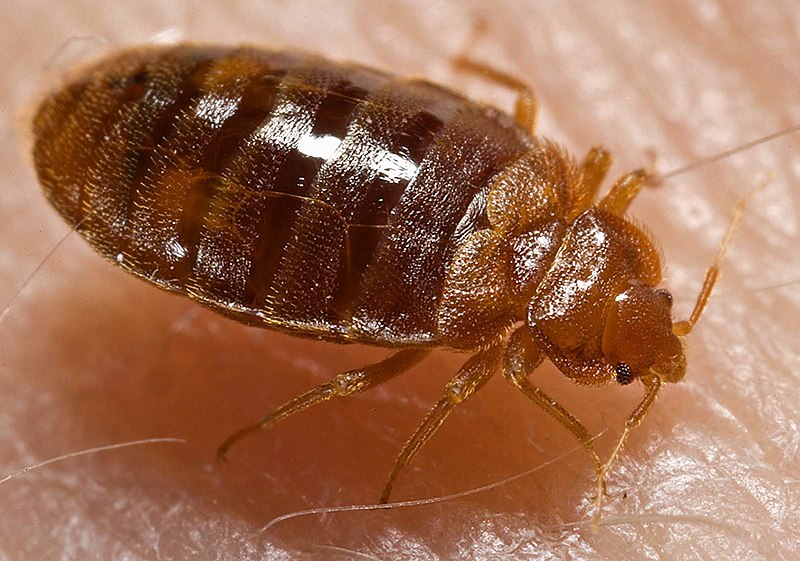Fitxategi:Bed bug, Cimex lectularius.jpg

Aurreikuspen honen neurria: 800 × 561 pixel. Bestelako bereizmenak: 320 × 224 pixel | 640 × 449 pixel | 1.024 × 718 pixel | 1.280 × 898 pixel | 1.600 × 1.122 pixel.
Bereizmen handikoa ((1.600 × 1.122 pixel, fitxategiaren tamaina: 161 KB, MIME mota: image/jpeg))
Fitxategiaren historia
Data/orduan klik egin fitxategiak orduan zuen itxura ikusteko.
| Data/Ordua | Iruditxoa | Neurriak | Erabiltzailea | Iruzkina | |
|---|---|---|---|---|---|
| oraingoa | 16:11, 17 maiatza 2007 |  | 1.600 × 1.122 (161 KB) | Patho | == Summary == {{Information |Description=ID#: 9822 Description: This 2006 photograph depicted an oblique-dorsal view of a '''bed bug nymph, Cimex lectularius''', as it was in the process of ingesting a blood meal from the arm of a “voluntary” human h |
Irudira dakarten loturak
Hurrengo orrialdeek dute fitxategi honetarako lotura:
Fitxategiaren erabilera orokorra
Hurrengo beste wikiek fitxategi hau darabilte:
- af.wikipedia.org proiektuan duen erabilera
- an.wikipedia.org proiektuan duen erabilera
- ar.wikipedia.org proiektuan duen erabilera
- arz.wikipedia.org proiektuan duen erabilera
- ast.wikipedia.org proiektuan duen erabilera
- azb.wikipedia.org proiektuan duen erabilera
- be.wikipedia.org proiektuan duen erabilera
- bg.wikipedia.org proiektuan duen erabilera
- bjn.wikipedia.org proiektuan duen erabilera
- bn.wikipedia.org proiektuan duen erabilera
- bs.wikipedia.org proiektuan duen erabilera
- ca.wikipedia.org proiektuan duen erabilera
- ca.wiktionary.org proiektuan duen erabilera
- ceb.wikipedia.org proiektuan duen erabilera
- cs.wikipedia.org proiektuan duen erabilera
- cv.wikipedia.org proiektuan duen erabilera
- dag.wikipedia.org proiektuan duen erabilera
- de.wikibooks.org proiektuan duen erabilera
- din.wikipedia.org proiektuan duen erabilera
- el.wikipedia.org proiektuan duen erabilera
- eml.wikipedia.org proiektuan duen erabilera
- en.wikipedia.org proiektuan duen erabilera
- en.wikinews.org proiektuan duen erabilera
- en.wiktionary.org proiektuan duen erabilera
Ikus fitxategi honen erabilpen global gehiago.


